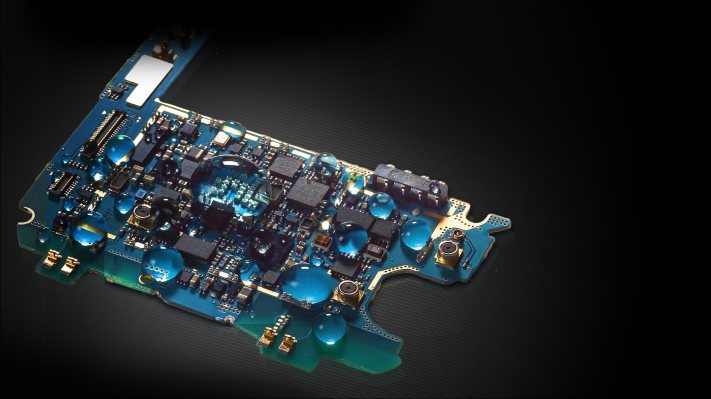Apple has a patent application in with the USPTO (via AppleInsider) that describes a few different methods for waterproofing electronic devices like the iPhone. The patent describes coating certain internal components like the main circuit board with a hydrophobic coating, presumably not unlike the process used by Liquipel and other similar companies. The process for applying the waterproof layer would only result in a coating ranging between one and ten microns thick, Apple says in the filing, meaning it wouldn’t take up any additional space inside the device shell.
The patent by Apple includes a provision for leaving the EMI shield included in all of its iPhones, iPads, MacBooks able to perform its job while also allowing for the components protected therein to be fully water sealed by the process. Special processes are needed because the coating is applied to the assembled circuit board, meaning the EMI shielding could obscure key internal components from receiving the benefits of the sealing.
To keep the exposed soldered ends of connectors protected against water, the patent also talks about using silicone seals at the point where they connect to boards and the flex cables that often run between the internal circuits of devices.
Apple hasn’t yet shown much interest in waterproofing its smartphones and tablets, though other smartphone makers like Sony have made it a core component of their hardware. Samsung made the Galaxy S5 water-resistant last year, but has gotten rid of that kind of environmental protection with this year’s Galaxy S6, and given the relative performance of both the GS5 and Sony’s devices, it remains unclear how much value consumers actually put in waterproofing in terms of impacting their buying decision.
There’s no doubt that Apple being able to list ‘waterproof’ as one of the marquee features on a future smartphone or tablet would cause a splash, however. This patent was filed in March of last year, so it’s a relatively recent invention, meaning it’s too soon to say that Apple is just locking down the IP without any strong intent to necessarily bring this to future products.
